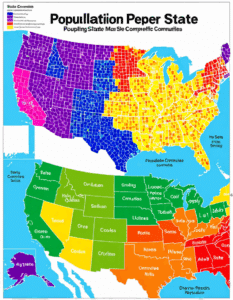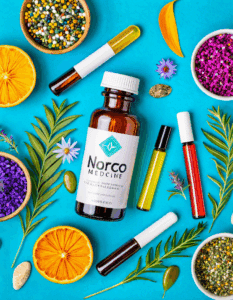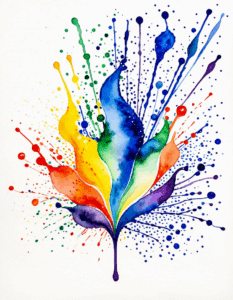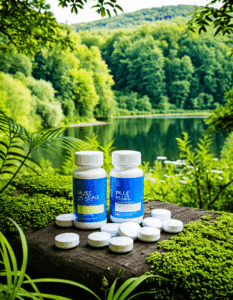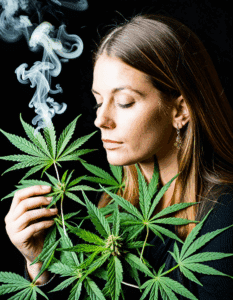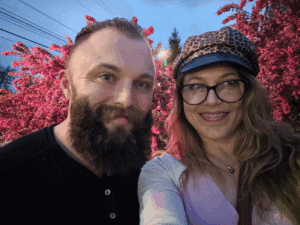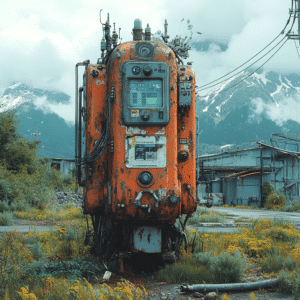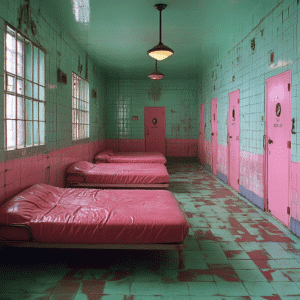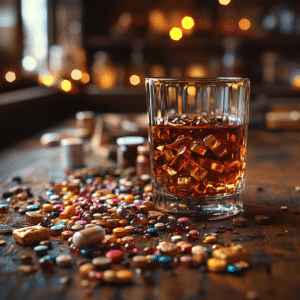Unveiling the Link Between PTSD and Addiction
Childhood trauma can leave deep scars, often manifesting as post-traumatic stress disorder (PTSD) and leading to a higher propensity for addiction. The connection between PTSD and addiction isn’t just anecdotal—it’s deeply rooted in science. The neurobiological changes due to early traumatic experiences can drive individuals to self-medicate, spiraling into substance abuse. Studies highlight a stark reality: children exposed to abuse or neglect are significantly more likely to turn to drugs or alcohol in an attempt to numb their pain. This article delves into how childhood trauma intertwines with PTSD and addiction, based on recent research findings and real-world examples.
The Neurobiology of Trauma: How PTSD and Addiction Interconnect
Childhood trauma has a profound impact on brain development. Research from Harvard’s Neurobiology Department shows that trauma can alter the brain’s limbic system, making individuals more susceptible to PTSD and subsequently, addiction. Imagine the brain as a delicate network of roads—a traumatic event is like an earthquake that wreaks havoc on this network. The overstimulation of stress hormones like cortisol can significantly impair the prefrontal cortex, which is responsible for decision-making and impulse control.
This neurological imbalance sets the stage for substance abuse as a coping mechanism. When trauma disrupts the brain’s normal function, individuals often seek relief through substances. This self-medication can quickly descend into addiction, creating a vicious cycle that’s tough to break without targeted intervention.
| Aspect | Details |
| Definition | PTSD: A mental health condition triggered by witnessing or experiencing a traumatic event. |
| Addiction: A chronic, relapsing disorder characterized by compulsive drug seeking, continued use despite harmful consequences, and long-lasting changes in the brain. | |
| Symptoms | PTSD: Flashbacks, nightmares, severe anxiety, uncontrollable thoughts about the event. |
| Addiction: Cravings, loss of control, tolerance, withdrawal symptoms. | |
| Connection | – Evidence links childhood trauma with an increased risk of alcoholism and other addictions due to brain structural abnormalities. |
| – PTSD and addiction often co-occur, forming a dual diagnosis that complicates treatment. | |
| Statistics | – Approximately 10.6% of OCD patients with PTSD have OCD emerge concurrently or after PTSD (posttraumatic OCD). |
| – 4.1% of OCD patients have OCD emerge before PTSD. | |
| Clinical Features | PTSD with co-occurring addiction is associated with more severe symptoms and distinct clinical features compared to when the disorders occur separately. |
| Effects on Brain | Childhood trauma can cause abnormalities in brain structure, predisposing individuals to addiction. |
| Treatment Approaches | – Integrated Treatment Programs: These address both PTSD and addiction simultaneously, improving the chances of recovery. |
| – Cognitive Behavioral Therapy (CBT): Effective in treating both PTSD and addiction by addressing negative thought patterns. | |
| – Medications: Antidepressants, anti-anxiety medications, and other drugs can help manage symptoms of both conditions. | |
| Challenges | – Stigma and shame associated with both PTSD and addiction can hinder individuals from seeking help. |
| – Dual diagnosis complicates treatment protocols and requires specialized care. | |
| Support Systems | – Peer Support Groups: Facilitate shared experiences and coping strategies. |
| – Family Therapy: Engages family members in the recovery process, offering support and understanding. |
Case Study: Eminem’s Journey from Trauma to Recovery
Marshall Mathers, better known as Eminem, offers a stark illustration of the link between childhood trauma, PTSD, and addiction. Growing up in a turbulent environment with a mother battling addiction, Eminem turned to drugs to escape his internal chaos. His prolific lyrics provide a window into the turmoil and pain he experienced. His subsequent addiction nearly cost him his career and life. Yet, his recovery story underscores the importance of addressing underlying trauma in addiction treatment. Eminem’s journey offers hope—it demonstrates that understanding and treating PTSD can provide a pathway to recovery and redemption.
The Role of Genetics and Environment in PTSD and Addiction
While trauma plays a significant role, genetics also contribute to the development of PTSD and addiction. A 2022 study by the National Institute on Drug Abuse found that individuals with a family history of addiction are more likely to develop substance abuse disorders, especially if they have also experienced childhood trauma.
Environmental factors exacerbate this risk. Exposure to violence or neglect creates a complex interplay of genetic and environmental influences. This dual threat underlines why trauma-focused care is crucial. For instance, children growing up in neighborhoods rampant with crime or neglect are more susceptible to PTSD and addiction, emphasizing the need for comprehensive community support systems.
Effective Treatment Strategies: Addressing Trauma to Combat Addiction
Treating addiction without addressing underlying trauma is often futile. Evidence-based therapies such as Eye Movement Desensitization and Reprocessing (EMDR) and Cognitive Behavioral Therapy (CBT) have shown promise in treating PTSD, thereby reducing the reliance on substances. Programs like those at the Betty Ford Center integrate trauma-focused care with addiction treatment, offering a holistic approach to recovery. Addressing the root cause—childhood trauma—these programs provide comprehensive care that heals both mind and body.
Innovative Approaches: The Role of Ketamine Therapy
Recently, innovative treatments like ketamine infusion therapy have gained attention for their efficacy in treating PTSD and addiction. Clinics such as Field Trip Health utilize ketamine to disrupt the neural pathways associated with trauma. Although still under investigation, preliminary results are promising. They offer new hope for those struggling with the dual burden of PTSD and addiction. This innovative approach highlights the importance of ongoing research and an open mind in the fight against these intertwined scourges.
Voices of Resilience: Stories of Recovery and Hope
Personal stories of recovery shine a light on the importance of holistic treatment approaches. Jamie Lee Curtis, an acclaimed actress, has openly discussed her recovery journey, emphasizing the need for addressing mental health issues alongside addiction treatment. Her advocacy and public transparency help destigmatize both PTSD and addiction. Curtis’s resilience offers hope to many who feel isolated in their struggles, showing that recovery is possible with the right support and treatment.
Community and Support Systems: Building a Network for Recovery
The role of community and familial support cannot be overstated. Organizations like Mothers Against Addiction provide essential resources and support for parents of children struggling with addiction or those who have lost their children to this disease. Peer support groups, such as those facilitated by Alcoholics Anonymous and Narcotics Anonymous, offer a crucial lifeline for individuals facing the dual challenges of PTSD and addiction.
Community programs, such as those offering Trauma-informed care, play a pivotal role. These programs provide parents with the tools to understand and support their children. The first hand stories shared by other parents within these networks foster solidarity and strength, reminding members that they’re not alone in their battles.
Moving Forward: Embracing a Holistic Perspective on PTSD and Addiction
Understanding the intricate relationship between PTSD and addiction is crucial in developing effective treatment strategies. Holistic approaches that address both the mind and body offer the best chance for recovery. By emphasizing trauma-informed care, we can provide a more compassionate and effective support system for those affected by these intertwined battles.
As we continue to unravel the complexities of PTSD and addiction, the stories of resilience and recovery remind us that hope and healing are always within reach. Embracing a holistic perspective isn’t just beneficial—it’s essential for those seeking recovery. With continued research, community support, and innovative treatments, a brighter future awaits us all.
Join us on this journey at Mothers Against addiction, where we stand in solidarity with every parent, offering understanding, compassion, and unwavering support. Together, we can unmask childhood trauma and pave the way to a healthier, addiction-free future.
PTSD and Addiction
Navigating the challenges of PTSD and addiction feels like climbing a steep mountain—often, it’s an uphill battle filled with surprises and discoveries. To shed some light on this intricate relationship, let’s delve into some fascinating trivia and facts that weave together to tell the story.
The Childhood Connection
Did you know that childhood trauma is one of the leading factors contributing to PTSD and subsequent addiction? When kids experience significant emotional disruptions, their self-worth often takes a hit. In fact, low self-esteem And addiction are often interlinked, creating a vicious cycle that can be tough to break. Kids with PTSD may develop coping mechanisms that include substance abuse, seeking solace in dangerous places.
The Numbers Game
Looking at the figures, it’s surprising to note how prevalent PTSD and addiction are. For instance, determining just How many Feet in a story can provide a neat metaphor for how layered and complex PTSD is. Each layer represents struggles and challenges that aren’t always visible but are deeply felt. Those battling addiction often feel like they’re dealing with emotional skyscrapers, towering above their heads.
Cultural Perspectives
Now, here’s an intriguing thought: How do different cultures view PTSD and addiction? Take a look at how religious festivities play a role in various communities. For example, understanding whether Muslims celebrate Christmas can offer insights into how cultural practices might influence individual and communal approaches to trauma and recovery. This cultural lens can shape distinct support systems and coping strategies, which are essential in addressing the dual challenges of PTSD and addiction.
By exploring these diverse facets, we can better appreciate the complexity of PTSD and addiction, helping to unravel the emotional layers one step at a time. Whether it’s grappling with a drug addict daughter or seeking help from various Lenders to address the financial strains that often accompany addiction, every bit of understanding brings us closer to supporting those in need.
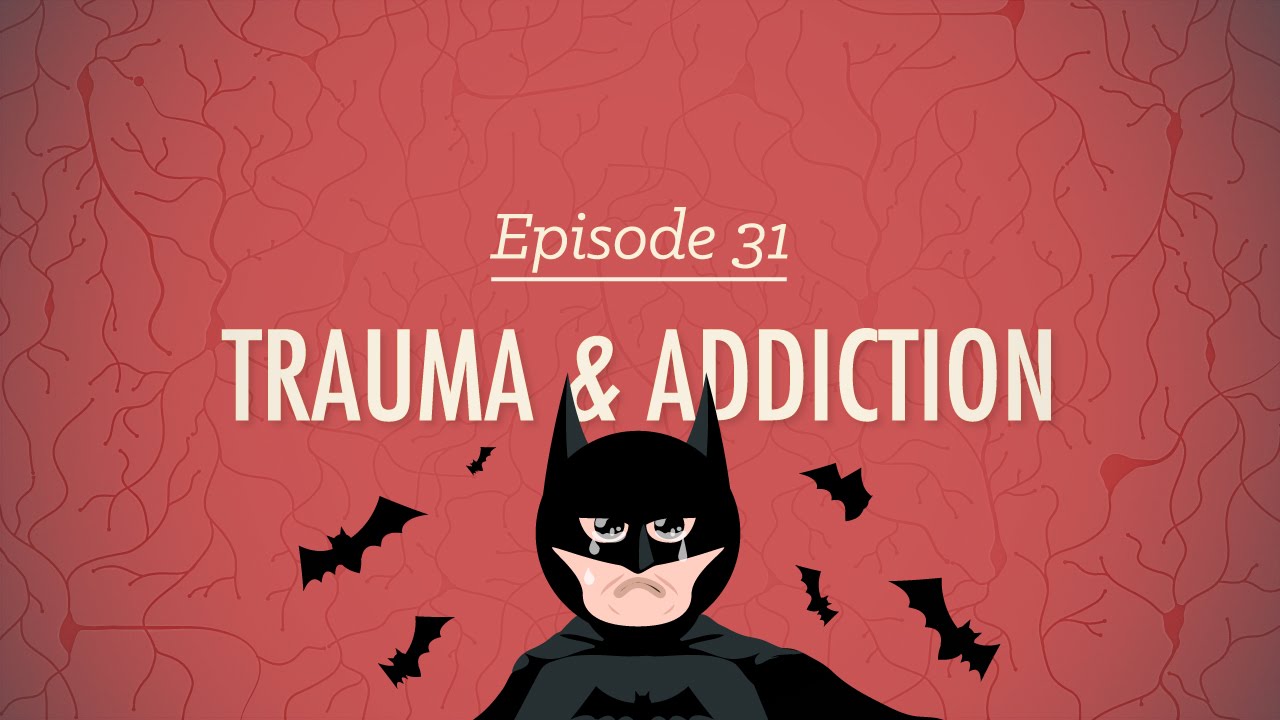
What are the top 3 forms of trauma that link to addiction?
Physical abuse, emotional abuse, and neglect during childhood are the top three traumas most often linked to addiction.
Is trauma the root cause of addiction?
Trauma isn’t always the root cause of addiction, but there’s a strong link between experiencing trauma and developing substance use disorders, often due to changes in brain structure.
Does PTSD cause obsessive compulsive disorder?
PTSD can sometimes lead to or occur alongside OCD, with about 10.6% of PTSD patients developing OCD either at the same time or afterwards.
What does a PTSD episode look like?
During a PTSD episode, a person might experience intense flashbacks, nightmares, severe anxiety, or uncontrollable thoughts about the traumatic event.
Do you treat trauma or addiction first?
It’s generally recommended to treat trauma first, as unresolved trauma can be a major barrier to overcoming addiction.
What are the 3 P’s of addiction?
The three P’s of addiction are Pathological use, Problematic behavior, and Persistent desire.
Can addiction be traced back to childhood trauma?
Yes, there’s considerable evidence that many addictions can be traced back to unresolved childhood trauma.
What is the biological cause of addiction?
The biological cause of addiction involves abnormalities in brain structure and function, particularly in areas related to reward and motivation.
Can drugs cause PTSD?
Drugs don’t directly cause PTSD, but substance use can complicate and worsen PTSD symptoms.
What are the symptoms of complex PTSD?
Complex PTSD symptoms include difficulty controlling emotions, feeling distrustful, persistent sadness, and negative self-perception.
What is the difference between PTSD and cPTSD?
PTSD typically involves reliving a single traumatic event, while complex PTSD (cPTSD) stems from repeated or prolonged trauma and includes additional symptoms like emotional regulation issues and negative self-perception.
What is the best medication for PTSD and OCD?
The best medications for treating both PTSD and OCD often include selective serotonin reuptake inhibitors (SSRIs) like sertraline or fluoxetine.
How do I snap out of a PTSD episode?
To snap out of a PTSD episode, grounding techniques like focusing on your surroundings, deep breathing, or speaking with a trusted person can help bring you back to the present moment.
What are the 7 symptoms of PTSD?
Seven symptoms of PTSD include flashbacks, nightmares, severe anxiety, uncontrollable thoughts about the event, avoidance behaviors, negative changes in thought patterns, and emotional numbness.
Does PTSD ever go away?
PTSD doesn’t ever completely go away, but with the right treatment and support, symptoms can be managed effectively.
What are the 3 main areas of the brain associated with addiction?
The three main areas of the brain associated with addiction are the prefrontal cortex, the amygdala, and the nucleus accumbens.
What are the three most common forms of substance abuse?
The three most common forms of substance abuse are alcohol use disorder, opioid addiction, and stimulant (such as cocaine or methamphetamine) addiction.
What are 3 factors that increase your risk of addiction?
Three factors that increase the risk of addiction include genetic predisposition, early exposure to drugs, and having a history of trauma or mental illness.
What are the three main addictions?
The three main addictions are to alcohol, prescription drugs, and illicit drugs.





